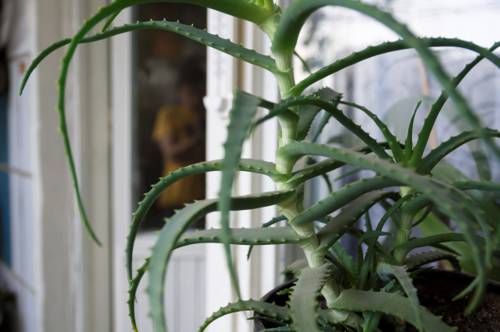
FAQ About Indoor Plant Companion Planting

What is indoor plant companion planting?
Indoor plant companion planting involves growing different plants in proximity to each other in the same environment to utilize their natural relationships for mutual benefits. This practice can help enhance plant growth, increase resistance to pests, and improve the aesthetic appeal of indoor spaces by combining plants that thrive together.

How does companion planting benefit indoor plants?
Companion planting benefits indoor plants by promoting a healthy ecosystem. Certain combinations can improve growth by sharing resources efficiently, repel pests naturally by taking advantage of the plants’ natural chemical defenses, and enhance the beauty of a space through complementary colors and shapes.

Can you give an example of a good companion planting pair for indoor plants?
Spider plants (Chlorophytum comosum) and pothos (Epipremnum aureum) are a great pair for companion planting indoors. Both are low-maintenance, share similar light requirements, and their trailing leaves create a lush, cohesive look when placed together.

Which plants should not be paired together indoors?
Plants with drastically different light and water requirements should generally not be paired together indoors. For example, succulents such as cacti, which prefer dry conditions and bright light, should not be planted with ferns, which thrive in humid, shaded environments.

How can companion planting help reduce indoor pests?
Certain plants emit natural chemicals that can repel pests. For example, marigolds can deter aphids and whiteflies when planted alongside their companions. This reduces the need for chemical pesticides and supports a sustainable plant environment.

What factors should be considered when choosing companion plants for indoors?
Consider factors such as light requirements, humidity preferences, and growth habit when choosing companion plants. Plants should have similar care needs to ensure they grow well together. Plant health, pest resistance, and aesthetic compatibility are also important considerations.

Is it possible to do companion planting with potted indoor plants?
Yes, companion planting can be done with potted indoor plants. You can either group different plant pots together or plant multiple species in a single, larger container if their needs align. Ensure that the pot has sufficient drainage and is large enough for all plant root systems.

What are the aesthetic benefits of companion planting indoors?
Companion planting indoors can enhance aesthetic appeal by combining plants of varying textures, colors, and heights that complement each other. Grouping plants with contrasting foliage or harmonious blossoms can create visually intriguing spaces and can serve as a focal point in room decor.

What are some low-light indoor plant pairs for companion planting?
Sansevieria (Snake Plant) and Zamioculcas zamiifolia (ZZ Plant) are excellent companions for low-light settings. Both can tolerate low light conditions and infrequent watering, making them ideal for rooms with limited natural light.

Can companion planting indoors improve air quality?
Yes, companion planting with certain indoor plants can improve air quality. Plants like peace lilies, snake plants, and spider plants are known for their ability to filter and purify indoor air by removing toxins like formaldehyde and benzene.

How do you care for companion-planted indoor plants?
To care for companion-planted indoor plants, ensure that their combined requirements are met. This includes appropriate lighting, watering schedules, and humidity levels. Regularly check for pests and disease, and adjust care routines as the plants grow.

What are some fragrant indoor plant combinations?
Pairing lavender with rosemary can create a fragrant indoor plant combination. Both plants like bright light and well-drained soil, and together they can infuse your space with delightful aromas.

Can indoor companion planting enhance plant growth?
Yes, indoor companion planting can enhance growth by allowing plants to share resources like light and humidity more efficiently. Certain plants can also release beneficial compounds that can promote the growth of neighboring plants. For instance, beans are known to fix nitrogen in the soil, benefiting plants grown with them.

What are some challenges of indoor plant companion planting?
The primary challenges include finding plants with similar care requirements, ensuring adequate space for growth, and managing potential pest issues. Overcrowding can lead to competition for resources, which can hinder growth instead of supporting it.

Are there any specific indoor plant combinations for reducing stress?
Combining greenery known for their calming effects, such as lavender and jasmine, can help reduce stress. They offer both visual and aromatic relaxation benefits, crucial in enhancing mental well-being in indoor spaces.

Can companion planting be used for edible indoor plants?
Yes, companion planting can be implemented with edible indoor plants. For example, pairing basil with tomatoes can be beneficial as basil can enhance tomato flavor and deter insects that might attack the tomato plants.

What role does plant spacing play in companion planting indoors?
Proper plant spacing ensures that each plant receives adequate light and air circulation, preventing issues like mold and mildew. It also allows plant roots sufficient space to grow and access nutrients in the soil, enhancing overall plant health.

Can plant height affect companion planting indoors?
Yes, plant height can affect companion planting indoors. Taller plants can provide shade for their shorter companions, which may be beneficial if some plants prefer less light. This vertical arrangement can also maximize space in smaller indoor areas.

How does companion planting align with feng shui principles?
Companion planting aligns with feng shui by promoting balance and positive energy flow in living spaces. Grouping plants that foster harmony and support each other's growth can enhance the chi, or energy, of a room, creating a more pleasant environment.

What is the difference between companion planting and mixed planting?
Companion planting focuses on the benefits plants can offer each other, such as pest control and improved growth, due to their biological relationships. Mixed planting simply refers to growing different types of plants together without necessarily considering these relationships. Companion planting is more strategic, while mixed planting is often more for aesthetic or spatial reasons.
